Journey through the Unesco World Heritage Sites of Tuscany
With eight sites belonging to the Unesco World Heritage List, Tuscany is the second region in Italy, after Veneto, which boasts the highest number of sites included in the list, but in this special ranking it obtains first place if one refers to sites that fall exclusively within the regional territory (Veneto, in fact, has six sites of its own, and three that are part of transregional or transnational sites, as opposed to Tuscany, which has seven and one, respectively). The real uniqueness of Tuscany, however, lies in the great variety of its sites, which cover a historical span capable of extending from antiquity to the twentieth century and with representations in all historical epochs, a record that for now Tuscany holds alone: from the archaeological sites of the Val d’Orcia to the Middle Ages of San Gimignano, Siena and Pisa, from the Renaissance splendors of Pienza to the Medici villas, all the way to the Art Nouveau season with the thermal baths of Montecatini, passing, of course, through the capital city of Florence, whose historic center is considered a Unesco heritage site in its entirety. Visiting Tuscany’s eight Unesco World Heritage Sites means embarking on a true journey through time, discovering wonderful sites that satisfy the passions of all types of travelers. Here are all the Unesco sites in Tuscany, and the good reasons why they are worth visiting.
1. Among enchanting landscapes and Etruscan sites: the Val d’Orcia
Hills dotted with cypress trees, neat vineyards and expanses of olive trees, here and there a few chapels silhouetted on the horizon: this is the wonderful landscape of the Val d’Orcia, an agricultural and rural area that has become a UNESCO site because it has preserved much of its ancient appearance. As we travel through the Val d’Orcia, we often see it exactly as the people of the Renaissance saw it. But that’s not all: here, settlements have been going on for thousands of years, since the Val d’Orcia was also very important for the Etruscans, so much so that there are several Etruscan sites that can be visited in the area, from the Parco dei Mulini in Bagno Vignoni to the famous Poggio alla Civitella in Montalcino to the Romitorio della Madonna del Latte near Pienza, a singular case of an Etruscan necropolis that was reused as a Christian hermitage in the Middle Ages. The Val d’Orcia, in fact, was also traversed by pilgrimage routes: there are numerous abbeys in the area, starting with the magnificent abbey of Monte Oliveto Maggiore, which includes one of the most important fresco cycles of the Renaissance, the one created by Luca Signorelli and Sodoma, who worked there between 1497 and 1498 and after 1505, respectively. It was mainly thanks to the 14th-century expansionism of the Republic of Siena that the Val d’Orcia took on the appearance that connotes it today: in fact, we see the same landscapes in the paintings of the great artists of the time, above all Ambrogio Lorenzetti. In 1999, on the initiative of five municipalities in the area, the area was declared a regional park, and since 2004 this land of ancient villages, archaeological sites and country cottages that reflect the prosperity of Tuscany over the centuries has become a UNESCO World Heritage Site. A journey through its small towns and villages, from Montalcino to Bagno Vignoni, from San Quirico d’Orcia to Pienza, is an experience among masterpieces of art, ancient monuments, one of the best gastronomic offerings in the region, and one of the most beautiful and appreciated landscapes in the world, a destination in the past for pilgrims and Grand Tour travelers, and today for legions of photographers ready to capture the unspoiled charm of these hills.
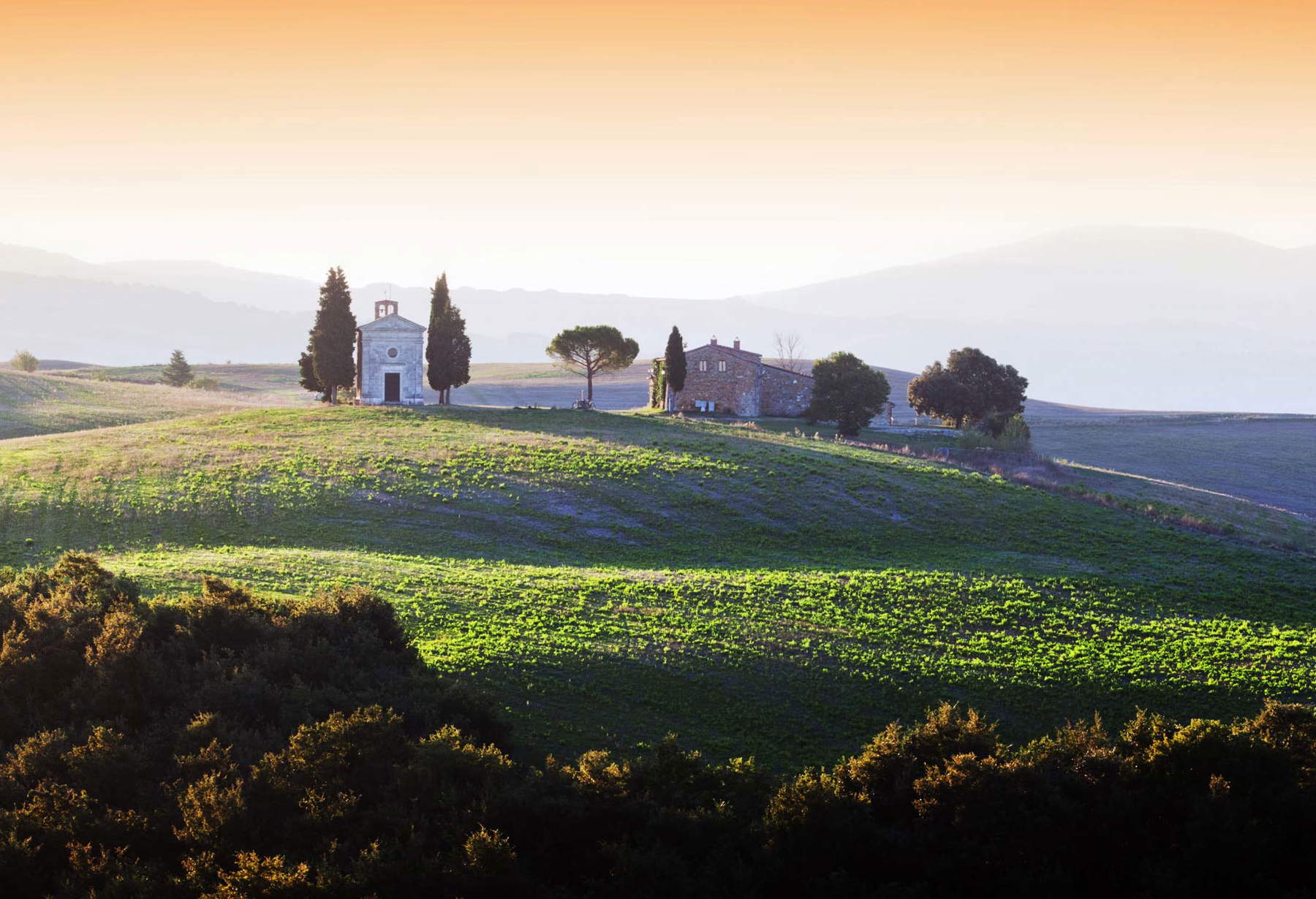
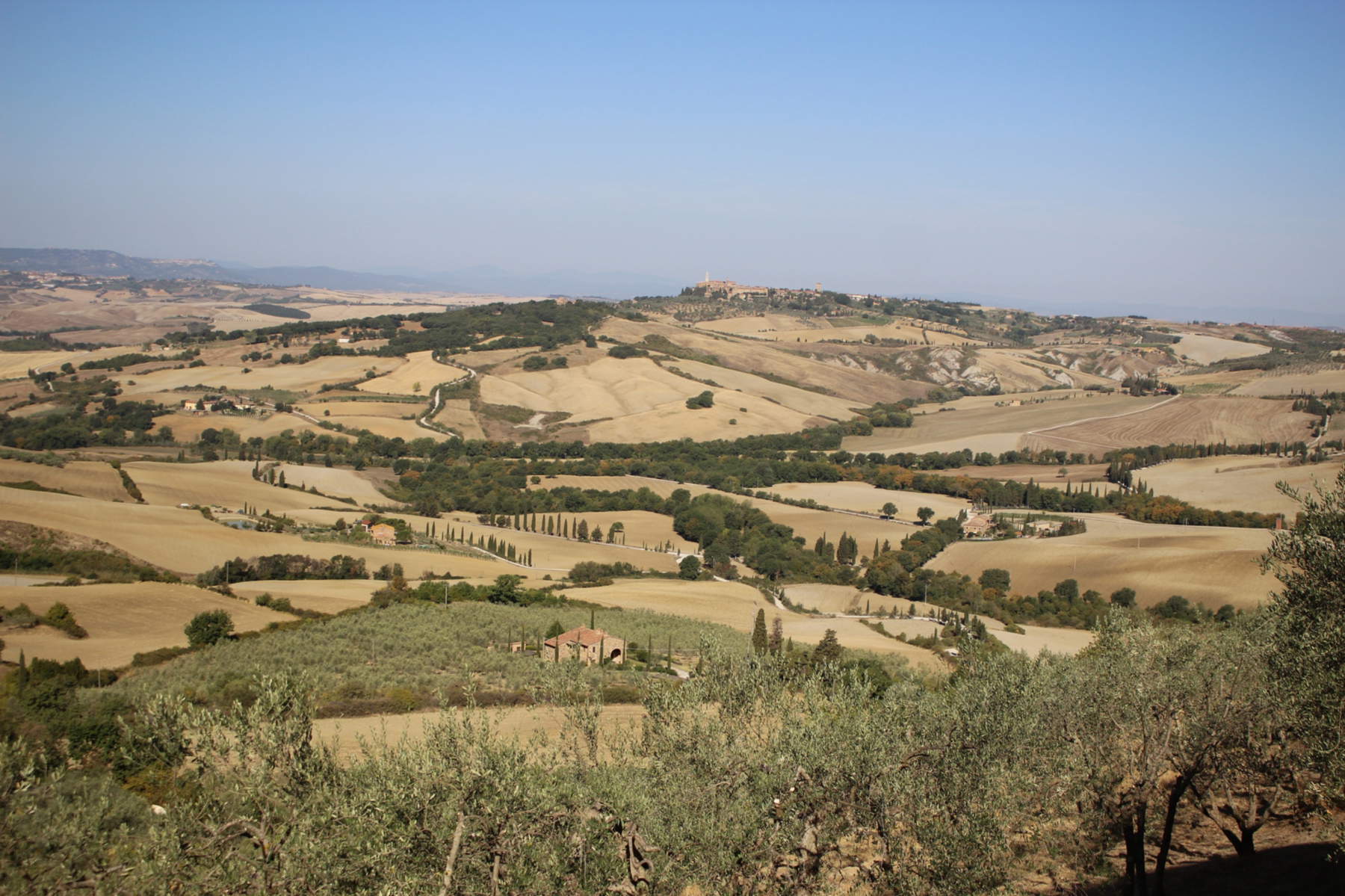
2. One of the best-preserved medieval towns in the world: the historic center of San Gimignano
Everyone has obviously heard of San Gimignano as the “Manhattan of the Middle Ages.” the definition is a bit worn but it makes the point well, because few medieval cities have preserved their heritage of towers intact more than San Gimignano (only Bologna can compete, but the towers of Felsina, admittedly slightly more numerous than those of San Gimignano, are spread over a much larger and more stratified historic center). The tower-houses were symbols of power and prestige: we have to imagine that in ancient times there were dozens of them, while today only fourteen remain, but they have fixed the city’s skyline in the collective imagination. Its medieval atmosphere has remained perfectly intact: the town of San Gimignano dominates a rise over the Elsa valley, halfway between Florence and Siena, and in the Middle Ages it was an important road and commercial junction between the north and south of the peninsula, as well as an indispensable stop for pilgrims descending to Rome. San Gimignano experienced its greatest development between the two and fourteenth centuries, and then experienced a decline from which it would never recover. And perhaps it is also for this reason that its urban fabric has been so well preserved. San Gimignano became a UNESCO World Heritage Site in 1990 for several reasons: first, because in the city are preserved numerous artistic masterpieces from the 14th and 15th centuries, including, in the Cathedral, Taddeo di Bartolo’s fresco of the Last Judgment (1393), Benozzo Gozzoli’s Martyrdom of St. Sebastian (1465), and above all Domenico Ghirlandaio’s magnificent frescoes such as the cycle of Santa Fina (1475) and theAnnunciation in the Baptistery (1482), and the sumptuous Majesty by Lippo Memmi, signed and dated 1317, inspired by Simone Martini’s in Siena’s Palazzo Pubblico. San Gimignano’s Palazzo Comunale itself houses a museum that recounts centuries of art history, while the ancient Spedale di Santa Fina houses the Archaeological Museum (home to an exceptional Etruscan masterpiece, theOmbra di San Gimignano) and the Gallery of Modern and Contemporary Art, set up by one of the greatest scholars of the last century, Enrico Crispolti, who has ordered here the works of the masters of nineteenth-century Tuscany (such as the Macchiaiolo Niccolò Cannicci) to 20th-century artists, from Renato Guttuso to Vinicio Berti, from Aligi Sassu to Ugo Nespolo. Dozens of works of art that render a rather vivid fresco of Italian art from the mid-19th century onward. So, too, in San Gimignano, the journey through time covers all eras.
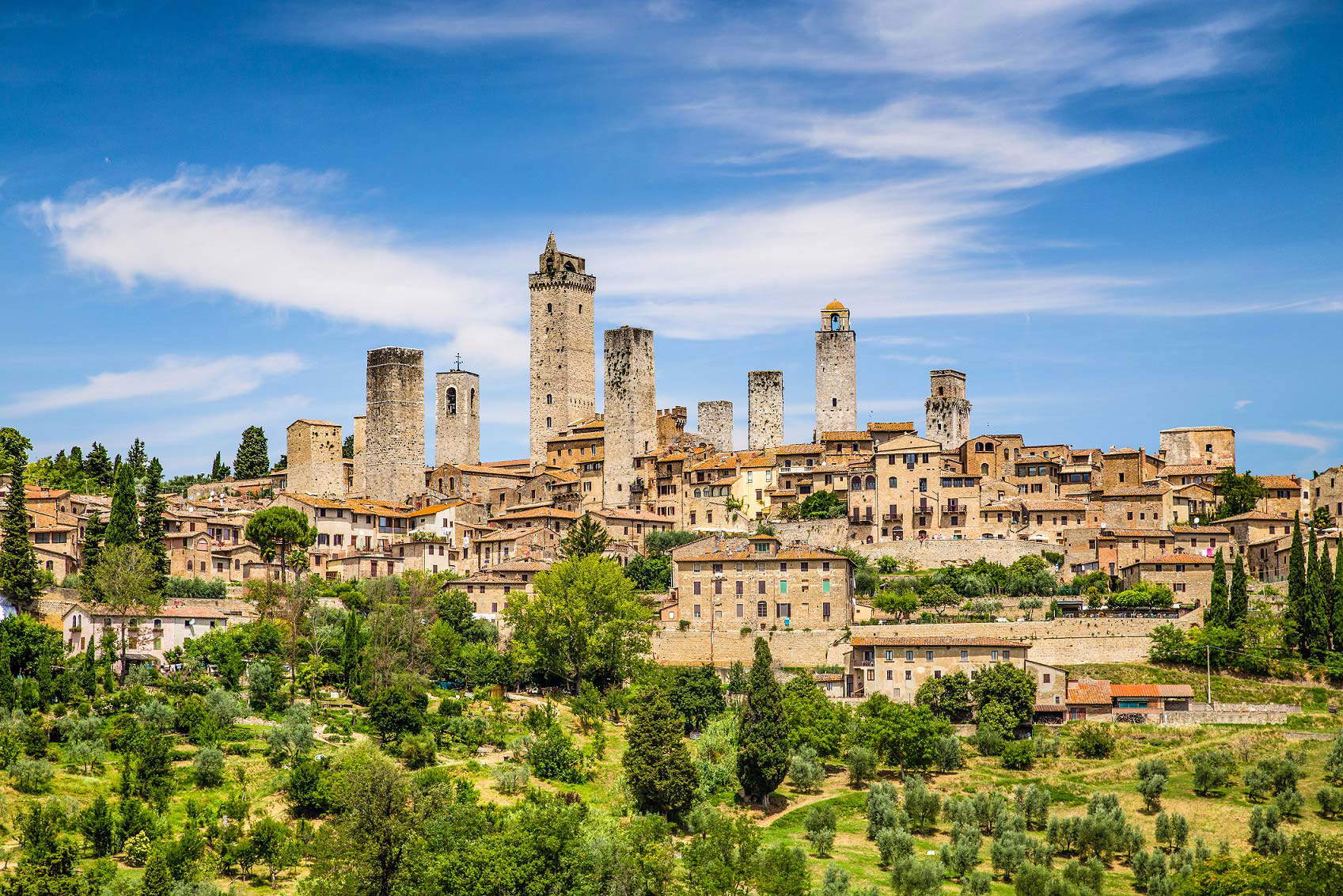
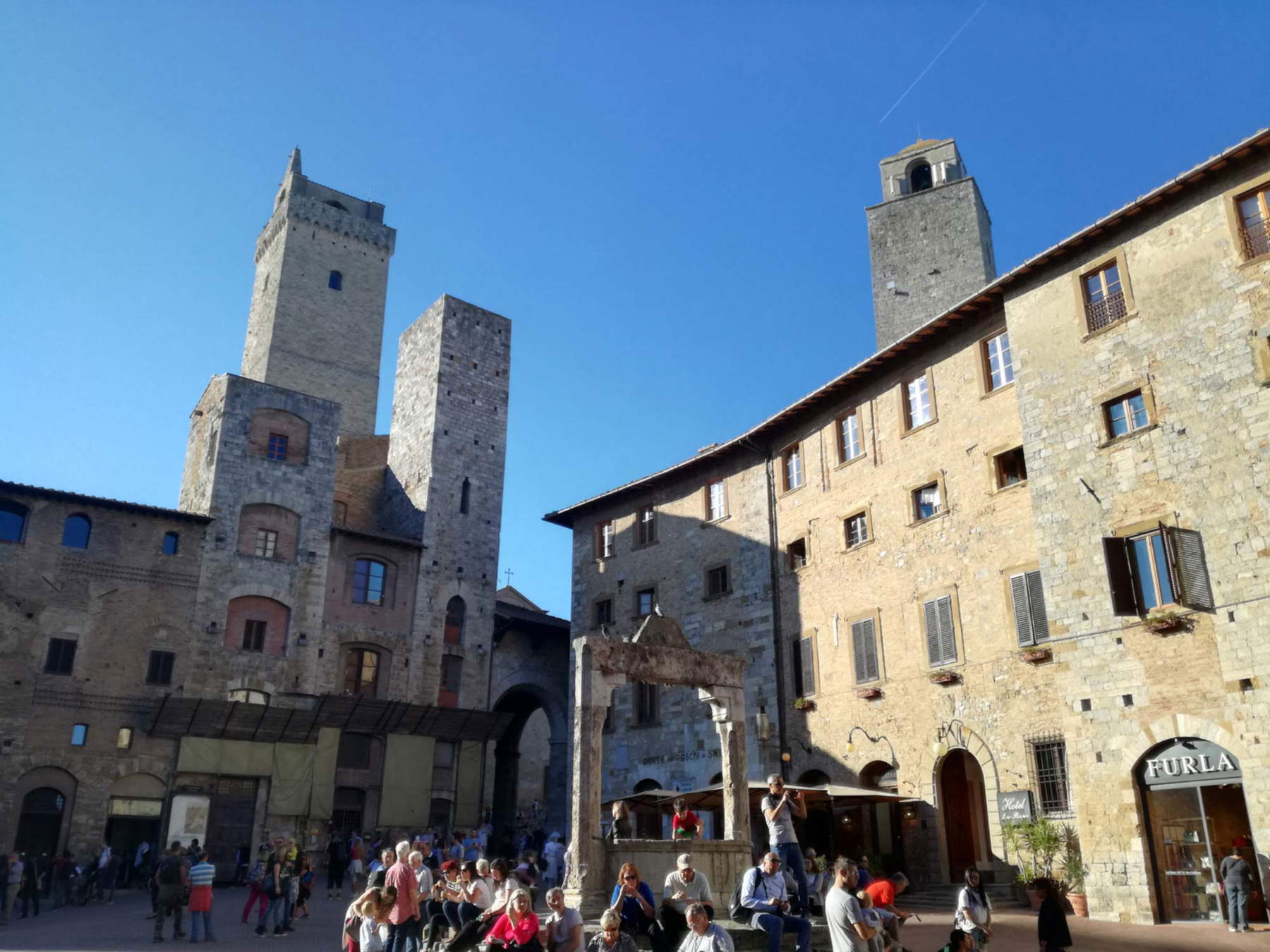
3. An architectural splendor of the late Middle Ages: the Piazza del Duomo in Pisa
The Piazza del Duomo in Pisa, or the “Field of Miracles” of D’Annunzio’s memory, probably needs no introduction, as it is known throughout the world and attracts hundreds of thousands of tourists from every corner of the planet every year. Located in the middle of a verdant meadow, leaning against the city walls, Piazza del Duomo reflects one of the brightest seasons of Pisa’s history, as told by the four masterpieces of medieval architecture that stand here: the Cathedral, the Baptistery, the Tower of Pisa and the Camposanto. On the side of the square, the monumental complex is completed by the former Ospedale della Misericordia, now home to the Museo delle Sinopie, the Palazzo dell’Opera della Primaziale Pisana on the opposite side (it is the site of important temporary exhibitions, as well as the headquarters of the Opera, which oversees the management of the monuments in the square), while at the back is the former Palazzo del Capitolo della Primaziale, later the Diocesan Seminary, then still the seat of the Academy of Fine Arts, and now the Museo dell’Opera del Duomo di Pisa. The site became a UNESCO World Heritage Site back in 1987 not only because of its beauty and integrity, but also because it is an ensemble that testifies perhaps more than anywhere else to the creative spirit that animated patrons, architects and artists between the 11th and 14th centuries. A milestone in the history of architecture that shares harmony and uniqueness in its spatial conception. What’s more, the monuments house within them singular works of art (it would suffice to mention only the pulpits by Nicola and Giovanni Pisano, reproduced in all art history textbooks). And again, the complex is a symbol of a historical era when Pisa dominated in Tuscany and across the sea: indeed, the architectural features of the Cathedral, Baptistery and Leaning Tower are found in many buildings constructed in Corsica and Sardinia in the Middle Ages. It should also be remembered that it was at Pisa Cathedral that Galileo Galilei, observing the oscillations of the bronze chandelier made by Battista Lorenzi, discovered at the age of 19 the theory of the isochronism of small oscillations, a prelude to his work on dynamics. And also here, from the top of the Tower, Galileo conducted his experiments on falling bodies. Important events in human history thus met on this square.
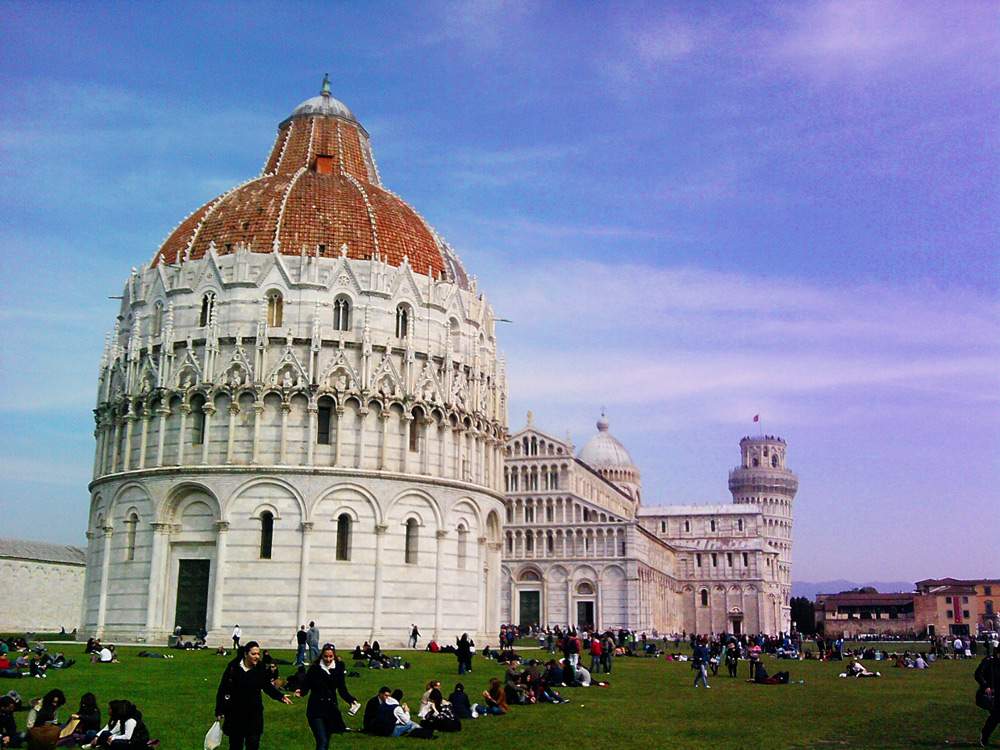
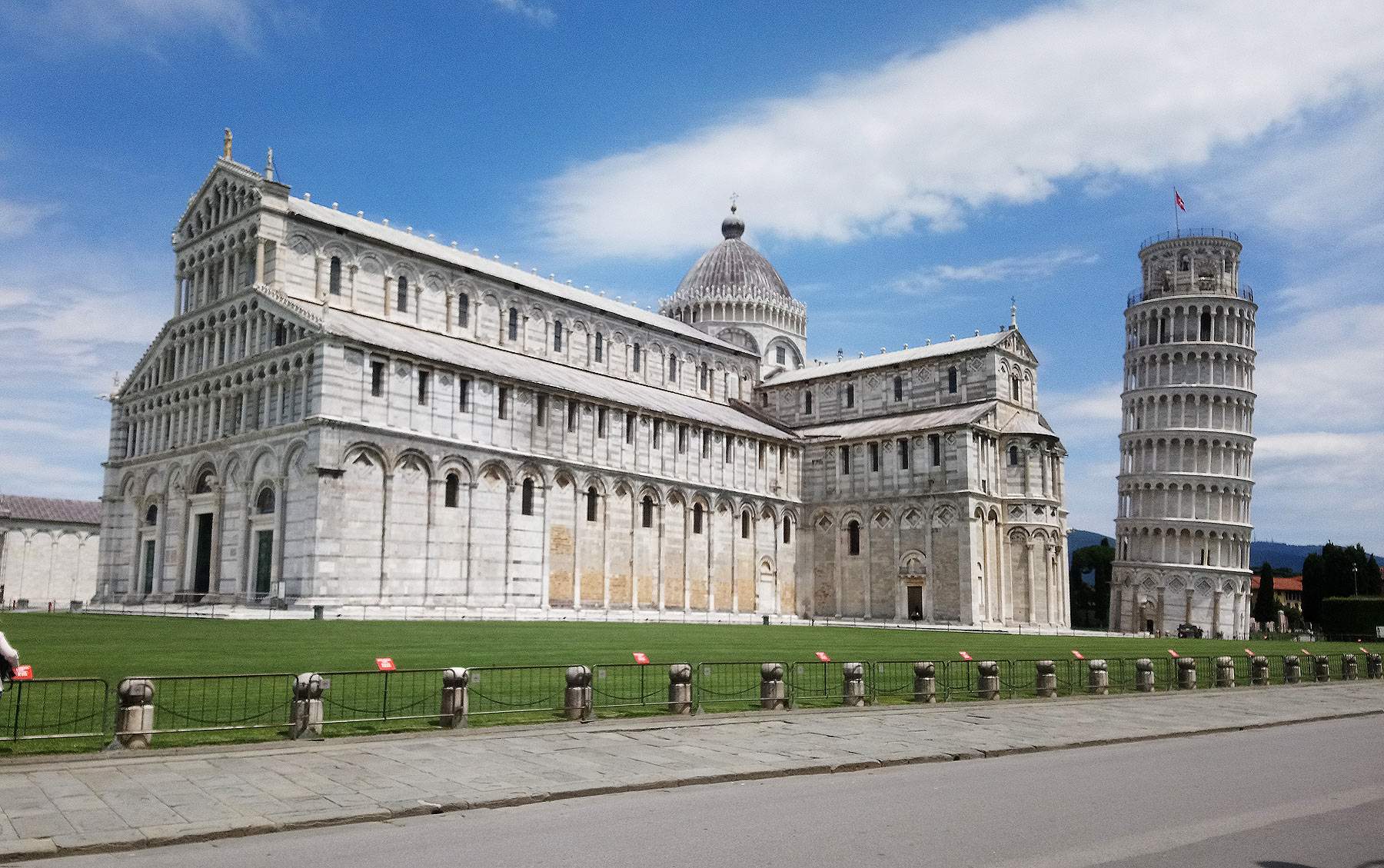
4. The ideal city of the Renaissance: the historic center of Pienza
Before it was called Pienza, this village in the Val d’Orcia was called Corsignano: it was here that humanist Enea Silvio Piccolimini, who ascended to the papal throne in 1458 as Pope Pius II, was born in 1405. And it was he who gave his hometown the face that distinguishes it today: the ancient medieval village was transformed into an ideal city built according to the precepts of Renaissance town planning, put into practice by the architect Bernardo Rossellino, who was commissioned to apply the principles of Leon Battista Alberti to the pope’s hometown. The new conception of the city is thus manifested in the celebrated trapezoid-shaped square, Piazza Pio II, built beginning in 1459. Enclosing it on three sides are the sober bulk of Pienza Cathedral at the back (behind, one can admire the panorama of the Val d’Orcia), the Borgia Palace or Palazzo Vescovile on the left (now the seat of the Diocesan Museum) and the Palazzo Piccolomini on the right (it is the former residence of the pontiff’s family, which can also be visited, with many rooms still intact), while on the side facing the city, the Presbytery, the Town Hall and Palazzo Ammannati alternate. To complete the transformation of the medieval village, a new road axis, Corso Rossellino, was built, connecting the two gateways to the city. Pius II’s ideas were so innovative that in one of the areas on the edge of the town center a number of terraced buildings were built, the so-called “New Houses,” which represented a form of old-fashioned social housing, built, of course, according to Renaissance urban planning canons. Pienza has been part of the World Heritage Site since 1996, due to the fact that the town represents the first application of the humanist Renaissance concept of urban design, and consequently Pienza played a significant role in urban development in Italy at the time.
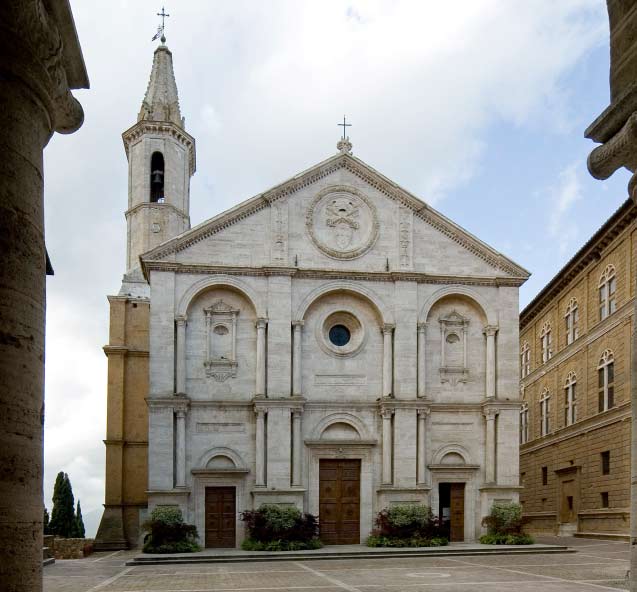
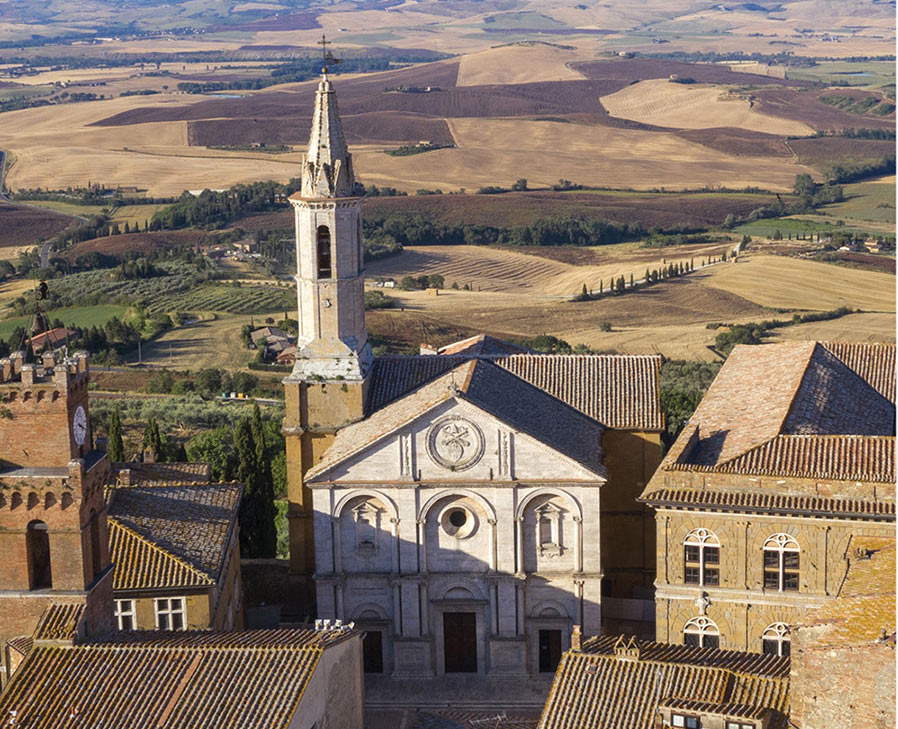
5. The elegance and sophistication of an ancient republic: the historic center of Siena
Siena, which has been a World Heritage Site since 1995, is described by UNESCO as “the embodiment of a medieval city.” Indeed, it was one of the great economic, mercantile, political, artistic and cultural centers of the time, the capital of a vast republic that stretched as far as the Maremma and maintained its independence until 1559, when Siena was finally defeated by Florence. The city experienced its heyday between the 14th and 15th centuries, a time when elegant palaces and numerous churches were built, buildings that today bear witness to the sophistication and elegance of the city’s ruling class, which in those years commissioned work after work from the likes of Duccio di Buoninsegna Simone Martini, the brothers Pietro and Ambrogio Lorenzetti, Lippo Memmi, all the way to Sano di Pietro, Taddeo di Bartolo, and Sodoma, names perhaps less well known but no less important and certainly no less refined (preciosity and elegance are the characteristics that made the Sienese school famous). It will suffice to recall that the Republic of Siena was the first state entity in history to include the concept of “beauty” in its constitution: in the Constituto Senese, the fundamental charter of the republic issued in 1309, it was in fact stipulated that whoever governed the city would have to take care of “maximally the beauty of the city, for cause of delight and cheerfulness to strangers, for honor, prosperity and increase of the city and citizens.” The Palazzo Pubblico, dominated by the soaring bulk of the Torre del Mangia, holds the best-known works, starting with Simone Martini’s Maestà and Ambrogio Lorenzetti’s Buon Governo frescoes. Also in the city, the Pinacoteca Nazionale bears witness to all the vicissitudes of Sienese art throughout the centuries, while its palaces rise as symbols of medieval town planning. Siena joined Unesco as an example of a city characterized by a strong and original artistic civilization that had a major influence not only on the territory but also in Italy and Europe, and then because the urban fabric of the city, strong with an evolution that, despite its predominantly medieval appearance, has remained unbroken over the centuries, have made Siena one of the cities that best document in Italy the stratification that has occurred between different eras.
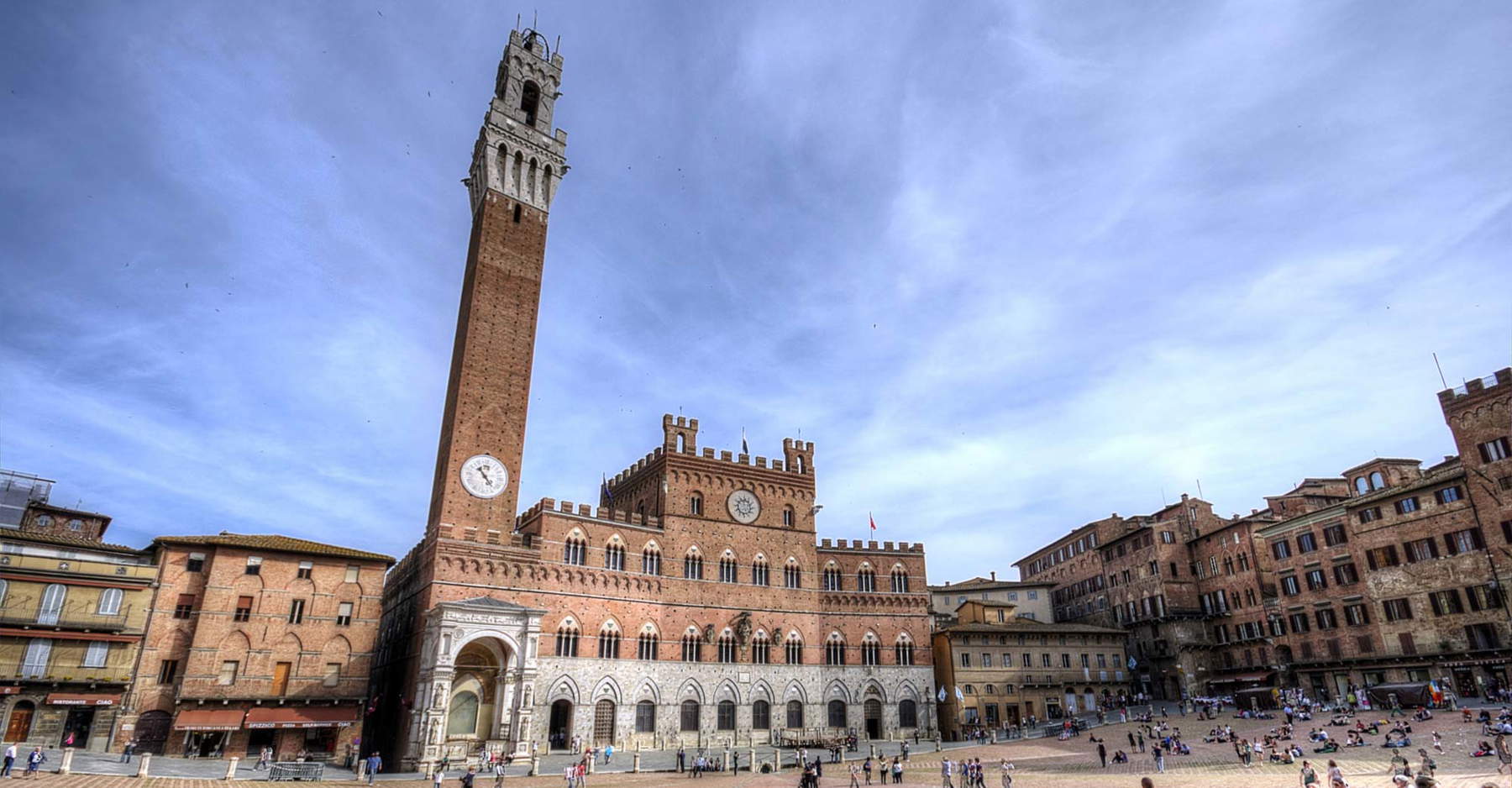
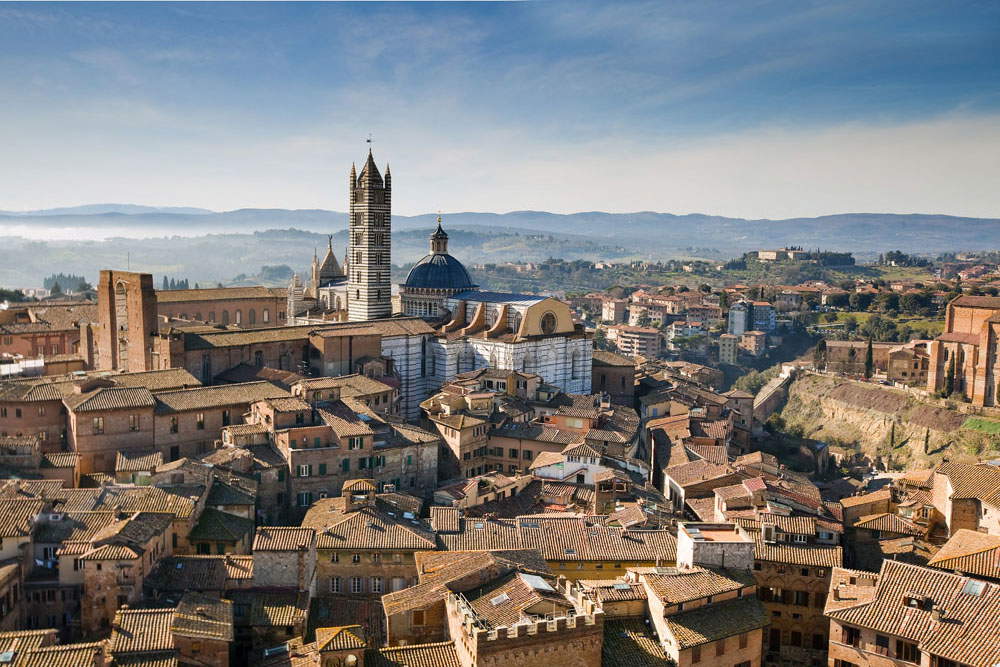
6. The ancient splendors of the Medici, rulers of these lands: Medici villas and gardens in Tuscany
Fourteen Medici villas are part of the UNESCO World Heritage Site, which became part of the World Heritage Site in 2013: in order from oldest to newest, they are the Villa of Cafaggiolo, the Villa of Trebbio, the Villa of Careggi, the Villa of Belcanto, the Villa of Poggio a Caiano, the Villa of Castello, the Villa La Petraia, Palazzo Pitti, the Villa of Cerreto Guidi, the Medici Palace of Seravezza, the Garden of Pratolino, the Villa of Poggio Imperiale, the Villa La Màgia, and the Villa of Artimino. They are almost all public (Cafaggiolo, Trebbio, Belcanto, and Artimino are the only four that are private, but the first two open to the public for events), and almost all are located around Florence: far from the immediate vicinity of the ancient Medici capital are Cafaggiolo (in Barberino del Mugello) , Trebbio (in Scarperia), the Medici Palace in Seravezza, and the Villa La Magia, which is located in Quarrata and is now home to an important contemporary art collection. The Medici villas and gardens bear witness to the financial and political fortunes that for centuries arisen for the Medici, one of Europe’s most powerful families from the 15th to the 18th century, cultured patrons of the arts, sustained by a taste and refinement that had few equals. According to UNESCO, the villas bear witness to the splendors of a prominent family of the Renaissance aristocracy, and together with their gardens made a decisive contribution to the birth of a new aesthetic and art of living. They are also living witnesses to the cultural and artistic patronage of the Medici, and several works of art conceived for these residences can still be found there.

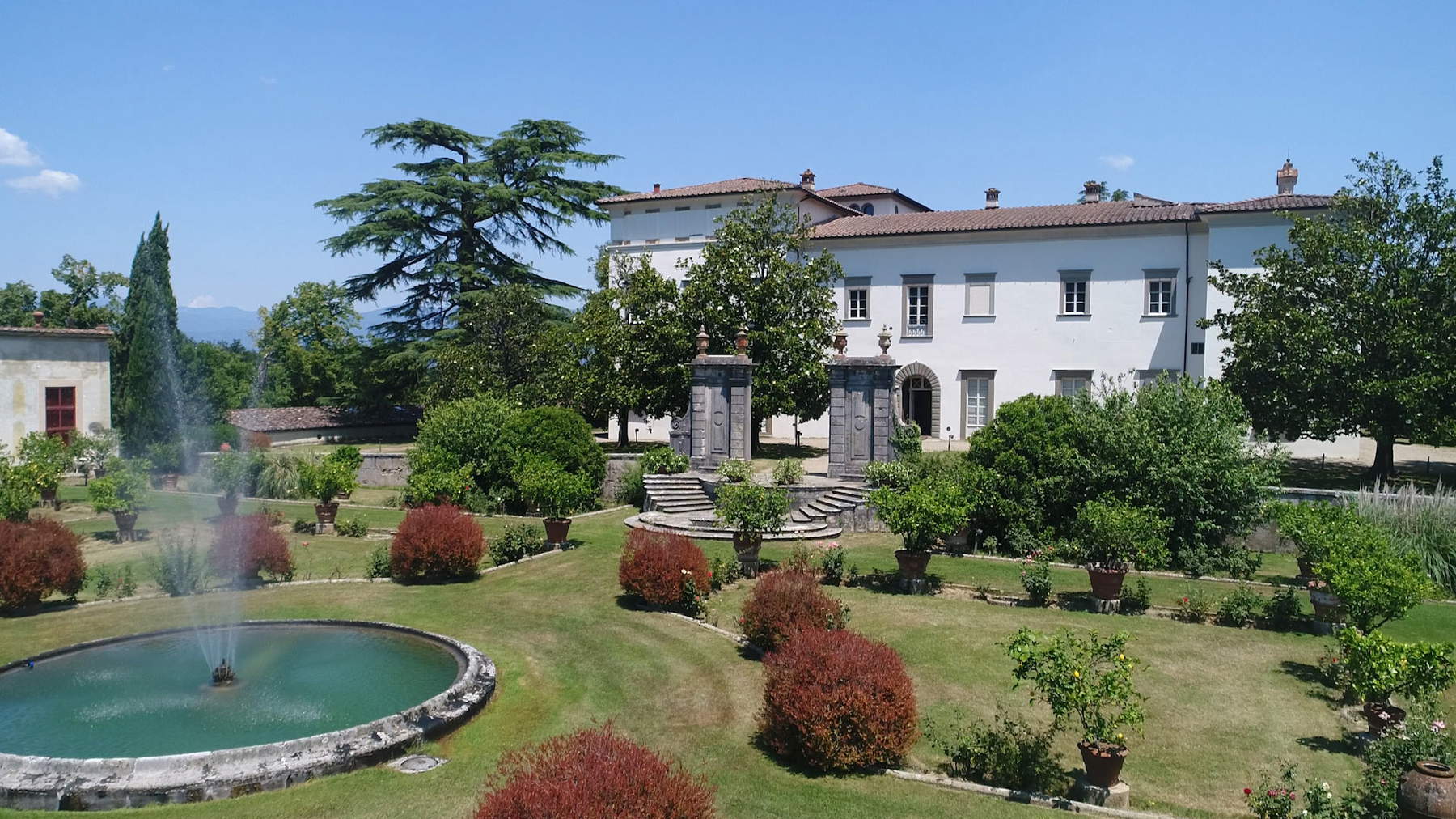
7. Bathing season at the Terme: Great Spa Cities of Europe - Montecatini Terme
Montecatini Terme is the latest of Tuscany’s Unesco World Heritage Sites to join the World Heritage List: the “Great Spa Cities of Europe” site was in fact inscribed in 2021, and Montecatini shares it with ten other cities in six countries (Austria, Belgium, France, Germany, the United Kingdom, and the Czech Republic). The Montecatini of spas has eighteenth-century origins: in fact, it was the Habsburg-Lorraine, who became Grand Dukes of Tuscany, who transformed the plain of an ancient medieval village (Montecatini Alto, which is notable for its well-preserved historic center), into a state-of-the-art spa town. Montecatini’s baths were known as early as the Middle Ages, and a number of important facilities existed in the 14th century, which continued to operate with mixed fortunes in later eras: in the eighteenth century, however, the reclamation of the Valdinievole marshes gave new life to these lands, and attendance at the Montecatini baths became more intense (construction work on the Terme Tettuccio, the most famous facility, dates from the late eighteenth century), until the twentieth century, when the town also changed its name (from Bagni di Montecatini to Montecatini Terme). It was in the 20th century that the sumptuous Art Nouveau and neo-Renaissance buildings arose, including the Tamerici Baths, the Rinfesco Baths, the Regina Baths, the Torretta Baths, and the Leopoldine Baths. Montecatini Terme, along with its European “colleagues,” is a witness to the season that had important implications for the development of medicine, balneology, and recreation from the eighteenth century through the twentieth century.
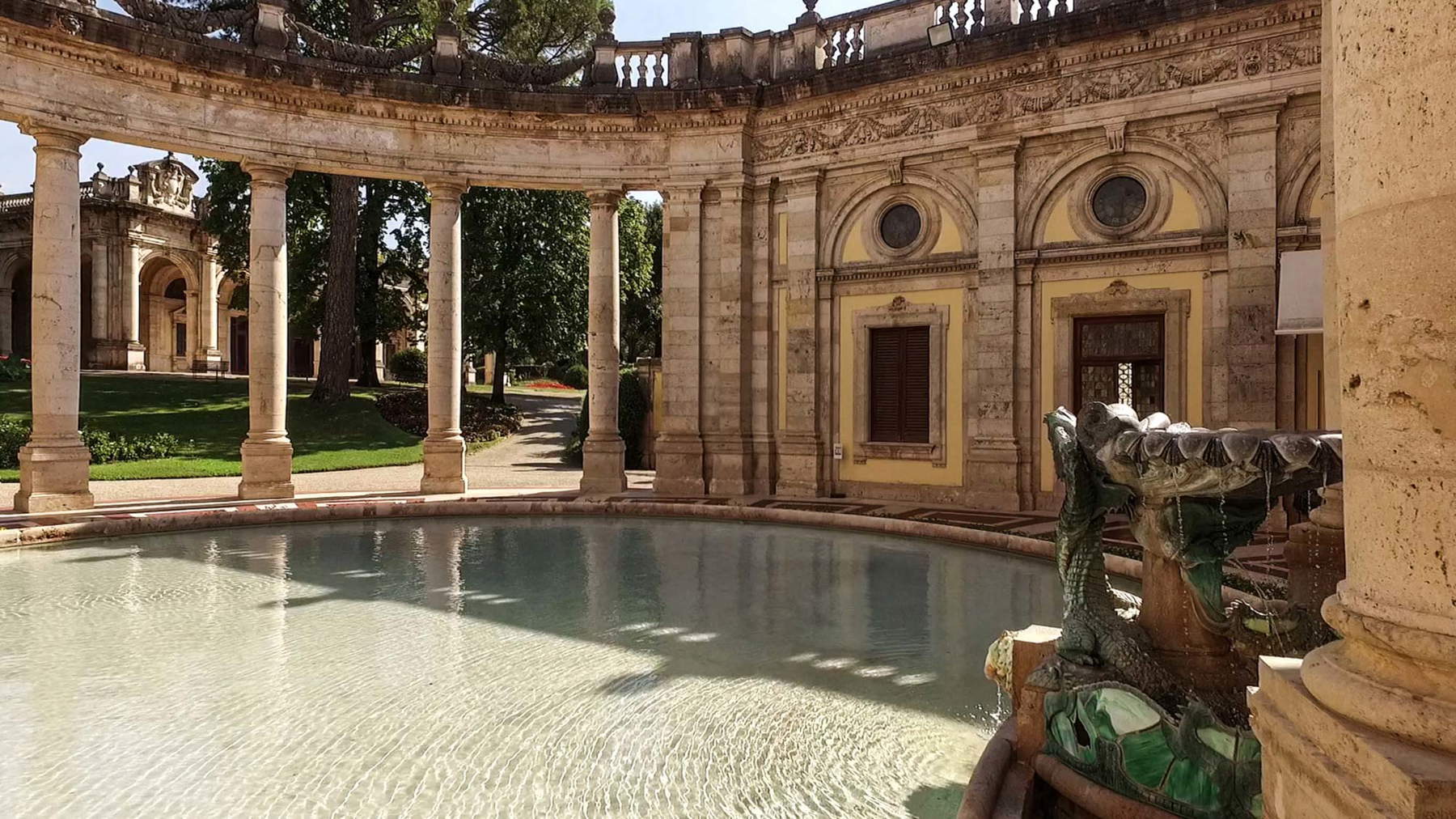
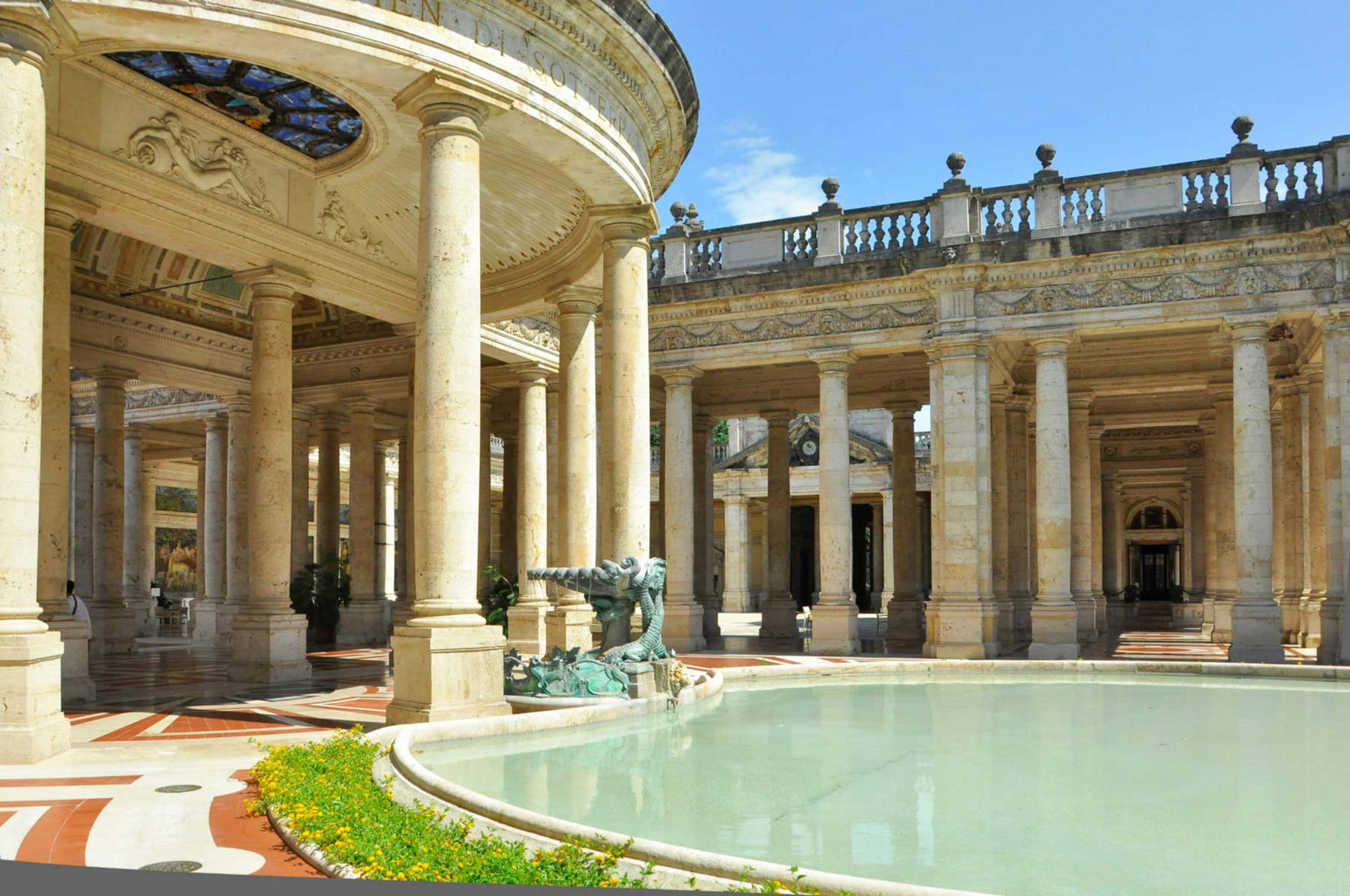
8. The city where it’s all there: the historic center of Florence
The Uffizi, Santa Maria del Fiore, the Pitti Palace, the Baptistery of San Giovanni, Ponte Vecchio, Santa Maria Novella, Palazzo Strozzi, Palazzo Rucellai, Santa Croce, Casa Buonarroti, the Bargello, the Convent of San Marco, Palazzo Davanzati, the Museum of the Twentieth Century... names (though here in a very limiting overview) that evoke the centuries-old splendor of Florence, a city for which all adjectives have been used, visited by millions of travelers from all over the world. The historic center of Florence is, of course, the oldest World Heritage Site in Tuscany, as its inscription date is 1982, the fourth site in Italy after the rock engravings of Val Camonica (1979), the historic center of Rome and the Santa Maria delle Grazie complex in Milan (both in 1980). Seven hundred years of artistic and cultural splendor, many of the greatest artistic masterpieces in human history, a historic center of immeasurable value, the city where the Renaissance was born, historical evidence from every era from prehistory to the present, villas, gardens, parks, splendid landscapes within walking distance of the historic center (you can get there even on foot: for those who want to enjoy the countryside outside the city, just climb above one of the “coasts,” the steep streets of the Oltrarno district, to find yourself in a moment in the hills, among olive trees and fragrant gardens), a vital city that continues to this day to be one of the nerve centers of contemporary art, with its galleries, exhibitions of the best artists of the current scene, events and art festivals. A city of global importance, one cannot say one has been to Tuscany without visiting it.
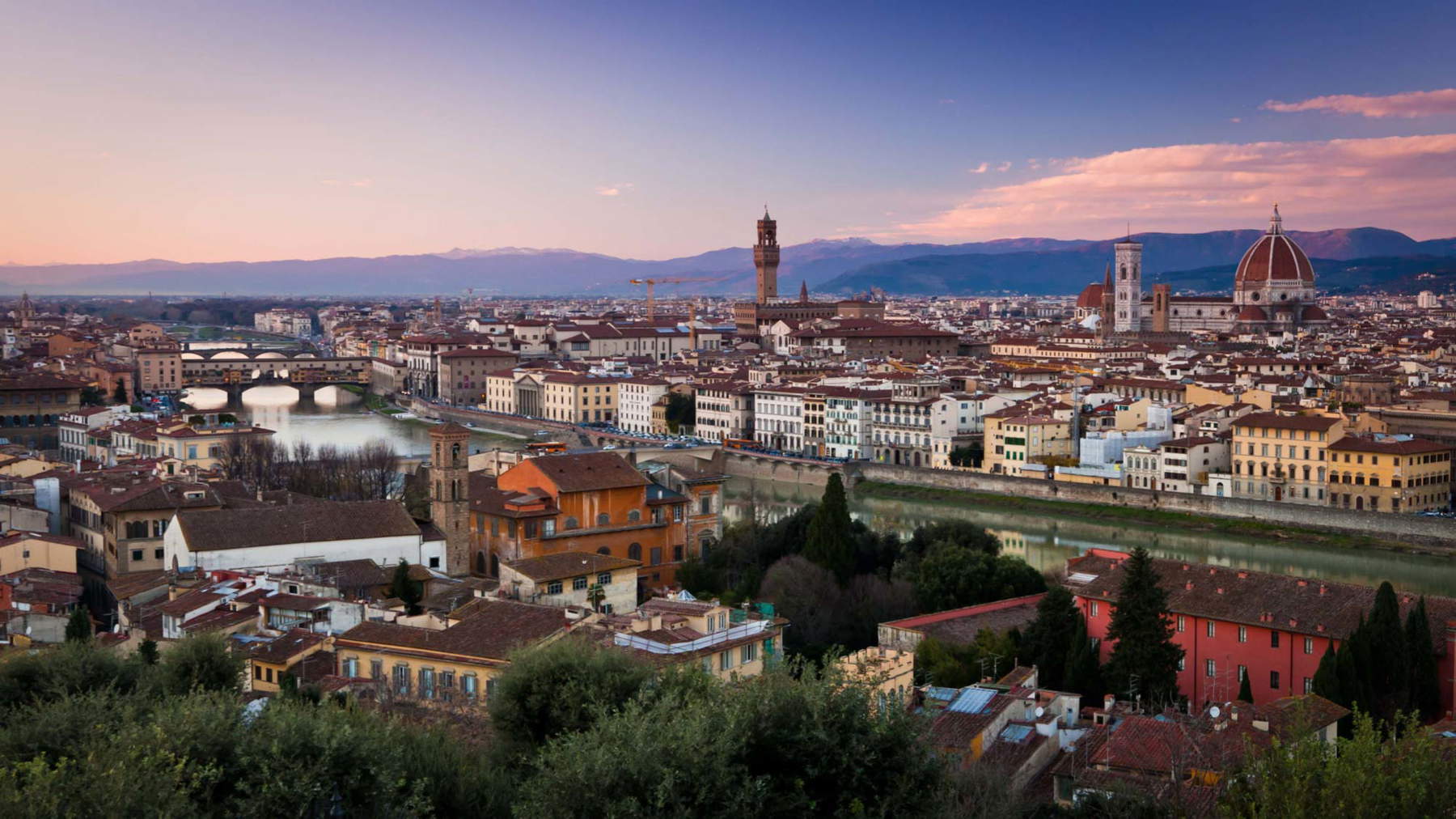
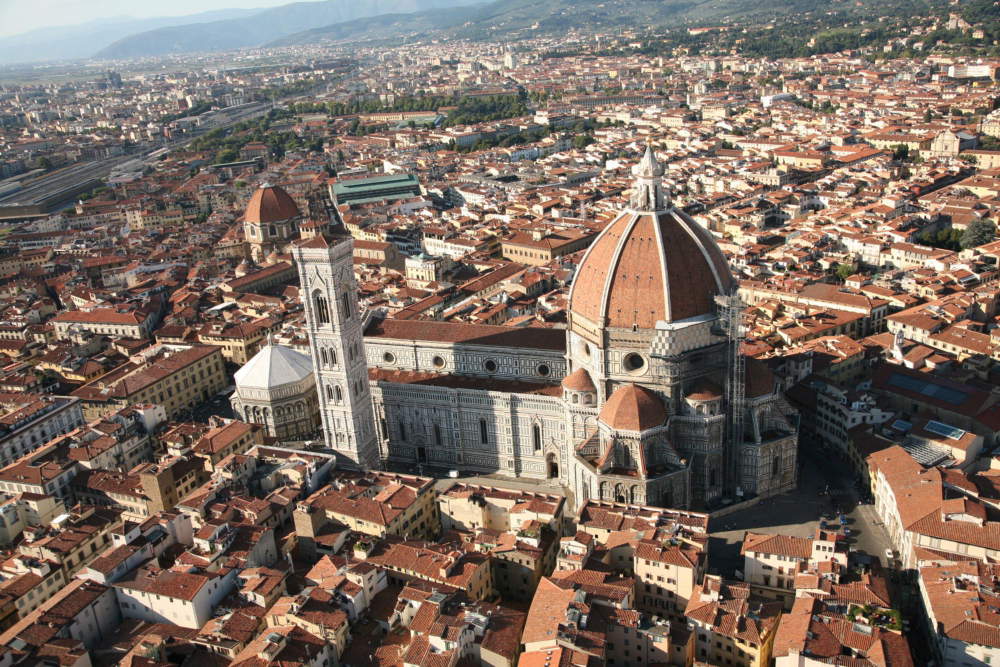
Warning: the translation into English of the original Italian article was created using automatic tools. We undertake to review all articles, but we do not guarantee the total absence of inaccuracies in the translation due to the program. You can find the original by clicking on the ITA button. If you find any mistake,please contact us.


























